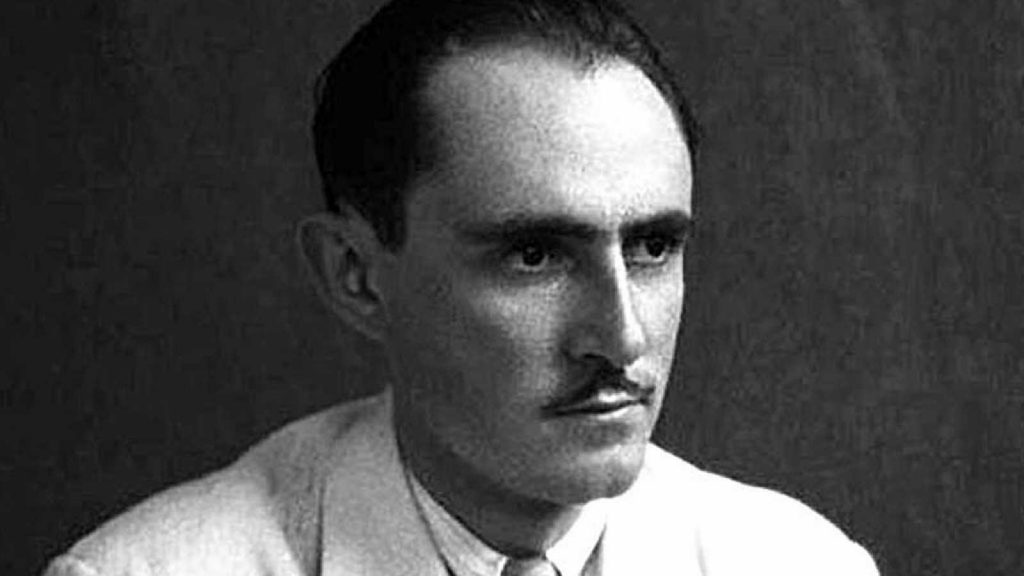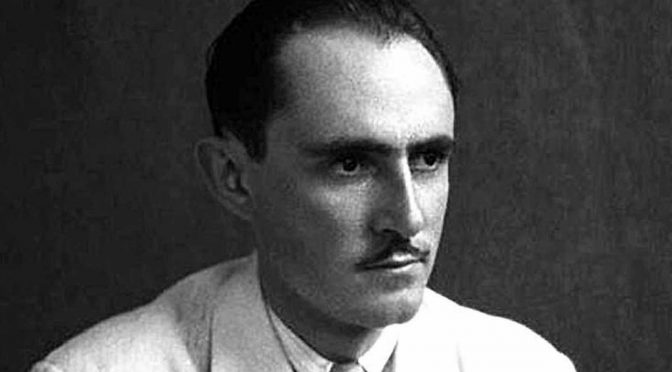The aftermath of Spanish Civil War and World War II forced many Basque intelligentsia to flee their native land and settle elsewhere. Indeed, the Basque government itself was in exile. Many of those Basques eventually found their way to the Americas where they became important figures, both representing the cause of the Basque government or involving themselves in local politics. Jesús Galíndez Suárez did both and paid the ultimate price.

- Galíndez was born in Amurrio, Araba, on October 12, 1915. His father was an eye doctor. When his mother died, his father took the family to Madrid, where Galíndez ended up studying law and became passionate about his native Basque Country. In 1932 he became part of the Basque Nationalist Party and began publishing monographs on history and politics.
- During the Spanish Civil War, he became the Legal Attaché to the Committee-Delegation of the Basque Nationalist Party, which was charged with protecting the Basques who resided in Madrid. Galíndez was in charge of the Section of Prisoners and the Disappeared of the Basque Government. His efforts ensured the freedom of many Basques and non-Basques alike during the war.
- At the end of the war, in 1939, he fled Spain and went into exile, making his way to the Dominican Republic, where he lived for six years, becoming a professor of legal science and a representative of the Basque Delegation.
- In 1946, he left the Dominican Republic for New York. He was involved in efforts that led the United Nations to condemn the Franco regime in Spain. He also continued his award-winning writing and became a professor of law and history at Columbia University. During this time, he completed his PhD thesis on the Trujillo dictatorship in the Dominican Republic, which was formally accepted by the university on February 27, 1956.
- Only days later, on March 12, Galíndez disappeared. He was last seen entering a subway station. His body was never found, though an ex-student claimed to have seen it fished out of the sea and buried in San José de Ocoa, Dominican Republic. There is some evidence that he was abducted by agents of the Trujillo regime, who flew him from New York to the Dominican Republic. The pilot was an American, Gerald Lester Murphy, who also disappeared later that year. However, other theories state that the US government had him killed because he knew too much about its relationship with the Trujillo government or that he was in fact a spy, working for the US.
- One of Galíndez’s last writings, discovered in his papers, describes the isolation and danger he felt:
I’m Basque…some laugh, and others hate me. That is all I have left when despair takes over and I wander through the streets. I’m Basque, and far away there is a people that I belong to. I am nothing, a mess of endless passions and desires. But I’m part of that people, the people I see in my waking dreams, dressed as a gudari on my way to the mountain, I see him in the romerías and when night falls, on a street, I see him making an effort on the jai alai court, and in the fishermen going out to see, I see him singing and praying, I see him throughout the centuries. I’m along, alone with my troubles. But I will continue, I will continue on even though no one understands me in this Babylon. And someday, I will lay down under the black poplar tree I chose on the top of a hill; in the lonely valley of my village, alone with my land and my rain. They will understand me in the end…
Translation from About Basque Country.
Primary sources: Estornés Lasa, Mariano. Galíndez Suárez, Jesús de. Enciclopedia Auñamendi, 2021. Available at: http://aunamendi.eusko-ikaskuntza.eus/es/galindez-suarez-jesus-de/ar-55785/; Jesús Galíndez, Wikipedia.
Discover more from Buber's Basque Page
Subscribe to get the latest posts sent to your email.


